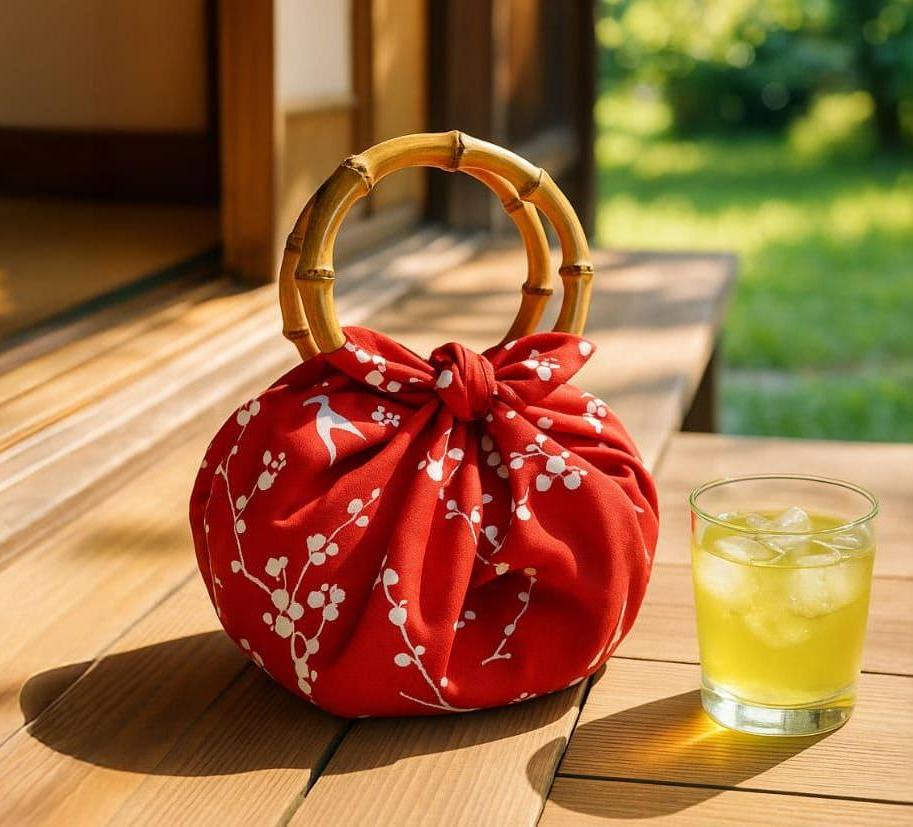Boat racing—also known as kyotei (競艇), or more formally kyōtei—is exactly what it sounds like: a government-run gambling sport in Japan where you bet on the order of boats racing on water.
Japan has six major types of public gambling. Excluding lotteries and sports betting, there are four types of races: horse, motorcycle, bicycle, and boat. Among these, boat racing ranks second in popularity—right after horse racing.
(Side note: Pachinko is not one of them. It’s not “public” gambling, nor is it exactly legal. It exists in a very gray area… but that’s a story for another time.)
At first glance, boat racing might seem simple.
You’re only betting on six boats, and their starting positions are fixed—with the inner lanes having an advantage.
You might be thinking, “Wait, that sounds too easy. How could anyone mess that up?”
Well—try it first, and then decide.
Because once you step into an actual boat race venue, things get interesting.
You’ll find yourself navigating a maze of cryptic terminology, ticket machines, and racing charts that look like something out of a math exam.
This article offers a no-nonsense guide to what boat racing in Japan is, why it’s surprisingly fun, and most importantly—where first-timers tend to get stuck.

1. What Is Boat Racing?
If you’re looking for the basic rules and mechanics of boat racing—what it is, how it works, and how to bet—there’s an official English site you can check out:
👉 BOAT RACE – Get a splash on the action! (Official English Site)
But here’s the short version:
Boat racing in Japan is just like horse racing, except with motorboats.
You bet on the finishing order of the boats, starting at just 100 yen per wager.
There are 24 boat race tracks across Japan, with races held almost every day.
Each venue runs exactly 12 races per day, and each race features six boats.
The lane positions are fixed in advance—and the inside lanes have a clear advantage.
So unless you make wildly ambitious bets, you’ll probably get at least one hit if you stick around all day. In that sense, boat racing might be one of the more beginner-friendly forms of public gambling in Japan.
What Makes Boat Racing Fun?
The raw intensity.
The roaring of the motors. The splash of the water. The sudden surge of the crowd.
If you find yourself yelling at the top of your lungs for the boat you bet on—congrats, you’ve graduated from beginner.
But there’s something else that makes boat racing very different from other racing sports:
The race is effectively decided in the first 30 seconds.
Each race is three laps around a 600-meter course.
But the real action usually ends within the first half-lap.
Why? Because it all comes down to the first turn.
The inside boats try to hold their ground and pull away.
The outside boats either go wide and try to pass everyone in one swoop, or they dive into any gap left on the inside.
All of this unfolds in a matter of seconds—at over 80 km/h.
Once that first turn is done, the race tends to stabilize.
Overtaking becomes much harder, and the finishing order rarely changes dramatically.
(…But sometimes, it does. Which means that no matter how well—or how badly—your boat starts, you’ll be on edge until the very end.)
That brief window of high-stakes maneuvering—from the start to the first corner—is where the heart of boat racing lies.
If you find yourself hooked on that tension, you’re already on your way to becoming an intermediate fan.
2. Heading to the Racecourse
There are 24 boat race venues across Japan.
Pick one that fits your travel schedule—but before you go, make sure a race is actually being held that day.
👉 BOAT RACE – Locations & Schedule (Official English Site)
What to Bring
To be honest, there are only two things you truly need to enjoy boat racing in Japan:
- Cash (especially 1,000-yen bills and 100-yen coins)
→ You’ll need a 100-yen coin just to get in. It’s best to have one for each person ready in advance. - Photo ID (like your passport)
→ You may be asked to show it if you win a large payout.
With these two, you can buy tickets, grab a meal, and enjoy the races just fine.
Boat race venues are still mostly cash-only territory.
E-money? Credit cards? Some places are slowly adapting, but it’s safer to assume they won’t work.
You’ll be greeted by ticket machines that look like they haven’t been updated since the Cold War.
For the Cautious Traveler: Optional but Handy Items
That said, some of us just can’t help loving the words “just in case.”
If that sounds like you, here’s your comfort list:
- Portable battery
→ You’ll be checking race sheets, watching replays, and tracking odds—your phone battery won’t survive.
Carrying a dead phone is about as useful as lugging around a frying pan—except the frying pan is actually better. At least you wouldn’t cry if you lost that. - Hat & sunscreen (summer) / Warm layers (winter)
→ While the grandstand is usually climate-controlled, outdoor viewing areas are at the mercy of the elements.
The weather has no interest in making your day magical. - Folding umbrella
→ Races go on, rain or shine.
And yes, you’ll likely get wet just walking from the station. - Pen or marker
→ Marking up a paper race sheet with a red pen is part of the classic experience.
For those who believe phones just don’t set the right mood. - Small binoculars
→ Once the boats start speeding away, the numbers can be hard to read.
There may come a moment when you’ll be glad you brought them.
Final note: As long as you have cash and ID, everything else is optional.
In fact, traveling light is better—lockers aren’t always available.
Hauling big bags back and forth between the stands and ticket machines can turn into more work than the racers themselves are doing.
All you really need—besides your essentials—is a little blessing from the gambling gods.
3. Let’s Buy a Betting Ticket
Once you arrive at the boat race venue, your next step is to buy a betting ticket for the upcoming race.
The process itself is easy, and the official guide explains it clearly:
👉 BOAT RACE – How to Bet (Official English Site)
So yes—you’ll know how to buy a ticket.
But… will that be enough?
Nope.
Because the real thrill of boat racing lies in the prediction.
Which boat will win?
No one knows for sure.
That’s why people collect info, make guesses, and analyze every little clue.
And let’s be honest—there are plenty of self-proclaimed “experts” out there who, despite their efforts, lose more than they win.
As a traveler, there’s no need to join their ranks.
But with just a few tips, you might be surprised how close your predictions can come to theirs—without the heartbreak.
Grab a Race Sheet First
When you enter the venue, look for a race sheet (出走表) near the entrance—it’s usually laid out on tables or in racks, like a free pamphlet.
This sheet lists all 12 races of the day, including each racer’s name, lane number, class rank, and recent performance.
It’s your basic prediction toolkit. Use it well.
Three Simple Tips (Plus a Bonus One)
1. The Inner Lanes Have a Big Advantage
This is the most important thing to remember:
Lane 1 wins more than 50% of the time across Japan.
Lane 6? Only around 2%.
This “inner lane advantage” is the foundation of almost every prediction. Start there.
2. Racer Class Tells You a Lot
All racers are ranked into four classes based on past results:
- A1 (top tier)
- A2
- B1
- B2 (lowest)
If an A1 racer is competing against only B-class opponents, they can sometimes win even from an outer lane.
So when making your prediction, think in pairs:
Lane position × Racer class.
3. Look for Patterns That Day
Maybe the inside lanes are losing more than usual.
Maybe outer lanes are doing surprisingly well.
Conditions like weather, wind, or tides affect race outcomes more than you might think.
If Lane 1 is having a rough day, maybe it’s time for a bold bet on Lane 4 or 5.
4. Everything Else? Optional.
There’s a mountain of extra info if you really want it:
- Venue-specific trends (some tracks favor inside lanes more than others)
- Engine or boat win rates
- Yesterday’s results
- Whether a racer is still in contention for a tournament win
But honestly? Don’t overthink it.
Pick one or two bits of info that feel interesting to you, and add them to your guess.
That’s more than enough.
Feeling tempted to give it a go?
Grab a race sheet.
Scan the details.
Place a small bet.
Feel your heart race as the boats take off.
This little ritual—guess, bet, watch—is where the fun truly begins.
And with a bit of luck and just enough know-how,
you might even match the predictions of those so-called pros.
4. Things to Keep in Mind
A boat race venue in Japan can feel like its own little world.
There are a few unspoken rules and quirks that are worth knowing—nothing scary, but good to be aware of.
1. The Crowd Is Diverse—And Not Dangerous
You might be picturing a rough crowd: old men yelling at tickets, smoke in the air, tension in the room.
And yes, there are plenty of older men scribbling on race sheets with red pens.
But in reality? It’s not threatening at all.
Most people are simply focused on their own bets, and no one will bat an eye at a foreign visitor.
If you shout “I won!” loud enough, the old guy next to you might even laugh and cheer with you.
Just be polite, respectful, and maintain a bit of personal space—you’ll be fine.
2. Be Mindful When Taking Photos
You’ll probably want to snap some shots—the boats, the stands, the atmosphere. Totally fair.
But avoid photographing people’s faces, especially racers, staff, and other spectators.
Some venues even have clearly marked “No Photography” areas, so keep an eye out.
As a rule of thumb: be subtle, be considerate, and maybe skip the giant zoom lens.
3. Stay in Sync with the Atmosphere
When a race starts, the crowd goes… quiet.
People grip their phones, stare at the water, and laser-focus on the finish line.
Shouting “Woohoo!” mid-race might make you stand out—in the awkward way.
Cheering is totally okay, but try to match the energy of the room.
Save the celebration for that glorious moment when your bet hits.
4. Don’t Get Carried Away
Races happen fast. One after another.
It’s easy to fall into the “just one more” trap… five times in a row.
Our advice? Treat it as entertainment and set a budget beforehand.
You can place a bet for as little as ¥100—just one race is enough to enjoy the full experience.
5. Know How to Get Out
Here’s a surprise: finding the exit can be confusing.
Boat race venues often have maze-like layouts, with one-way walkways or closed areas during races.
If you’ve got a train or bus to catch, make sure you’re sitting somewhere with an easy exit.
Trust us—it’s not fun sprinting through stairwells with five minutes to spare.
A boat race venue is a wonderfully odd corner of Japan.
It’s casual, it’s local, it’s welcoming—but a little awareness goes a long way.
Tourists are absolutely welcome, but treating the space (and its regulars) with respect
will make the whole experience that much more enjoyable.
5. Final Thoughts
Boat racing in Japan is easy to enjoy once you understand the basics.
Drop by during your trip, place a simple ¥100 bet, and watch a race—
even that small moment can become a lasting memory.
The rules, the crowd, the energy—it’s all a little different.
But there’s no need to feel out of place.
If you’re curious to see another side of Japan, boat racing might just be the perfect detour.





